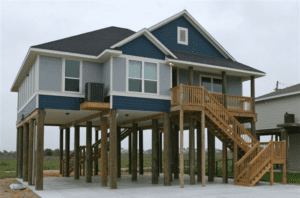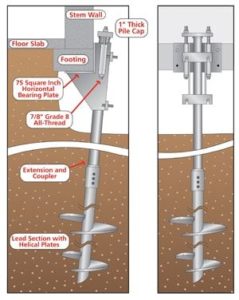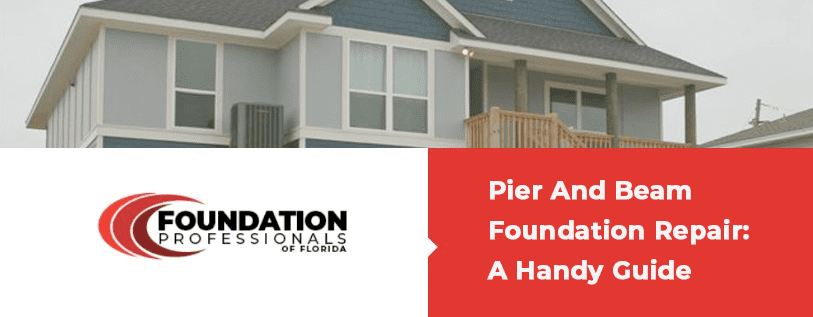What Are Pier And Beam Foundations?

Most Common Causes Of Pier And Beam Foundation Problems
How Are Pier And Beam Foundations Repaired?



- Concentric Bracket and Steel Push Piers. You’ll also see these referred to as micro piles, push piers, or resistance piers. They’re driven deep into the earth beneath your foundation until they reach what’s called the ‘’load-bearing strata’’. This is strong, stable soil that’s able to support the weight of the structure. Once the push piers are in place, hydraulic jacks are attached to them and the building is raised.
- Screw Jacks. Screw jacks are often used in repairing a pier and beam and/or crawl space construction. Each screw jack permanently stabilizes and raises existing beams and floor joists in a crawl space or pier and beam foundation with load carrying capacities of 60,000 lbs. Typically, a pre-cast or poured concrete footing is installed to support the screw jacks. Each screw jack is equipped with a heavy duty threaded rod to allow for final and precise elevation adjustment. This system is often used to stabilize and lift existing support beams and floor joist in a crawl space that have been structurally compromised and are commonly used to support sagging beams and floor joists that are often the result of improper spacing of existing pier columns or weakened floor systems due to mold and wood rot.
- Helical piers. Helical piers – which get their name due to their corkscrew-like shape – are another common method of repairing pier and beam foundations. After they’re screwed into the ground until they reach stable, load-bearing soil, hydraulic jacks are used to lift the foundation back up.
- Wooden floor joist and beam replacement. Sometimes, there are signs of foundation settlement even though the structure’s foundation is sound. This happens when there’s a problem in the crawl space under a pier and beam foundation. Crawl space repairs will often include wooden floor joist and beam replacement.
Cost Of Pier And Beam Foundation Repair

The cost of any pier and beam foundation repair will depend on a variety of factors including the size of the building, it’s condition, the type and severity of the settlement problem, the chosen repair solution, and the building’s geographical location. Therefore, it’s impossible for us to give you even a ballpark figure.
If you want a repair estimate for your pier and beam foundation you should contact an experienced foundation repair specialist and schedule an inspection. Whatever you do, make sure the repair includes a warranty. A foundation repair is something that you should only have to do once, and a reputable foundation repair contractor will have no problem offering you a warranty on their work.
Signs Of Foundation Damage
Sticking doors and windows. This happens because, after a foundation moves, everything is out of plumb.
Floor, wall, or ceiling cracks. Usually, cracks caused by foundation damage will be larger. However, this isn’t always the case. If you see any crack that looks suspicious, have a professional foundation repair contractor come out and inspect it.
Torn or wrinkled wallpaper. This can happen when the wall behind the paper cracks.
Fascia board pulling away. Gaps indicate a possible foundation problem.
Leaning or bowing walls. Walls can bow when water-saturated soil presses against the foundation.
Water damage, or the presence of mold and mildew.
Floor feels spongy when you walk on it. This is a common symptom of a problem in your crawl space.
Exterior signs of foundation damage
- Gaps around doors/windows. Gaps around doors and windows may be an indication that the foundation has moved and things are now out of plumb.
- Leaning chimney. This could indicate a problem either with the foundation under the chimney, or with the foundation under the house.

- Foundation or masonry cracks. Also look for stairstep cracks in brickwork.
- Uneven concrete slabs. If your sidewalk, driveway, or pool deck is uneven, it could be a sign that your home’s foundation is as well.

